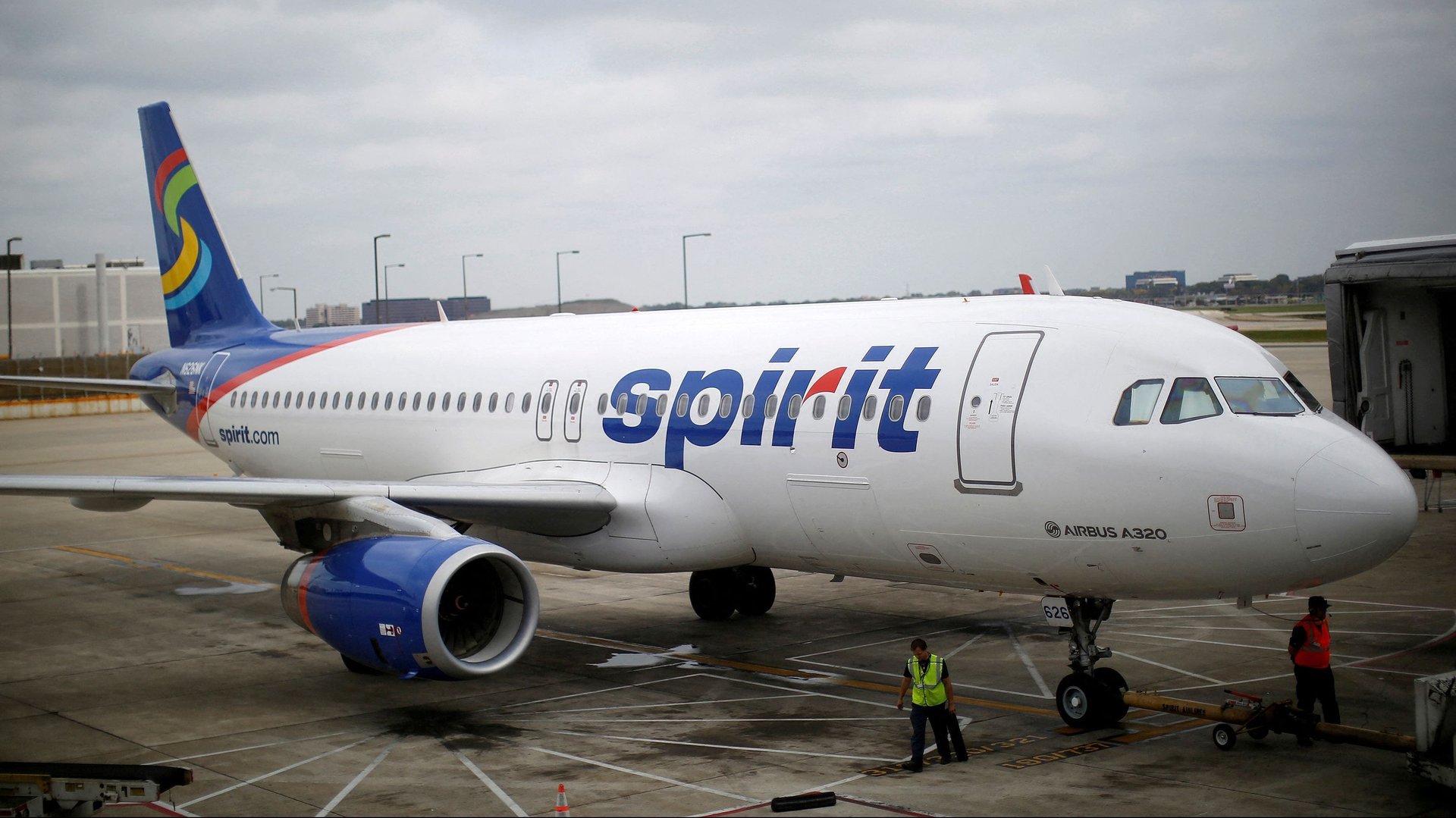Why JetBlue is so desperate to buy Spirit
JetBlue wants to buy Spirit Airlines—badly. Since April, the company has been locked in a battle with its smaller rival, Frontier Airlines, over its potential Spirit merger. On June 20, JetBlue raised its offer price to $3.6 billion, roughly two thirds higher than the current value of Frontier’s offer, which stands at about $2.2 billion.


JetBlue wants to buy Spirit Airlines—badly. Since April, the company has been locked in a battle with its smaller rival, Frontier Airlines, over its potential Spirit merger. On June 20, JetBlue raised its offer price to $3.6 billion, roughly two thirds higher than the current value of Frontier’s offer, which stands at about $2.2 billion.
At times, JetBlue’s offered price has nearly doubled Frontier’s, but Spirit’s board of directors has steadfastly refused JetBlue’s advances for fear of monopoly regulators blocking the deal. The US Justice Department is already suing JetBlue to block a proposed partnership with American Airlines, which prosecutors say would unfairly reduce competition.
Spirit’s board is now negotiating with both JetBlue and Frontier, and hopes to wrap up talks before the company’s June 30 shareholder meeting. In a letter accompanying JetBlue’s most recent offer, CEO Robin Hayes wrote that he hoped to “reach a friendly, negotiated agreement” with Spirit’s board.
If such an agreement isn’t forthcoming, Hayes threatened to continue JetBlue’s campaign to convince Spirit shareholders to vote against Frontier’s takeover offer at the June 30 meeting. JetBlue is also appealing directly to Spirit shareholders to override the board and sell their stock to JetBlue for $33.50 per share—a 57% markup from the stock’s price the day before the company’s offer.
JetBlue has offered to sell off some of its assets to avoid antitrust scrutiny (although it refuses to abandon its partnership with American Airlines), and it offered to pay Spirit a $350 million breakup fee if the deal ultimately gets blocked by regulators.
Why is JetBlue so obsessed with buying Spirit?
There’s a clear hierarchy among US domestic airlines. The four biggest carriers—American, Southwest, Delta, and United—control two thirds of the market. After that, there’s a stark drop-off in market share among the regional and budget airlines, none of which controls more than 6% of the market.
But a tie-up between Spirit and either Frontier or JetBlue would create the fifth largest US domestic airline in terms of market share. In either case, the new airline would be a cut above its regional and budget rivals, and it would move much closer to the scale of the big four airlines. As Hayes wrote in his letter to Spirit’s board, a merger between Spirit and JetBlue would “create a true national competitor to the dominant legacy carriers.”
Spirit is particularly attractive to JetBlue because of its presence in Fort Lauderdale and Orlando. Both Florida destinations are on JetBlue’s list of six strategic “focus cities” (pdf) where it aims to expand its footprint. Merging with Spirit would give JetBlue access to gates and routes at both airports and make the combined airline the biggest competitor in those two cities.
A merger would also quickly boost the size of JetBlue’s fleet of airplanes and its roster of pilots. After widespread retirements during the pandemic, pilots are now in short supply, causing airlines to cancel flights just as consumer demand for air travel is picking up.
Finally, JetBlue wants to buy Spirit because it would prevent Frontier from buying Spirit. JetBlue listed a successful Frontier-Spirit merger as a potential business risk in a January SEC filing. “If the proposed merger [between Frontier and Spirit] meets regulatory and stockholder approval, the combined airline is expected to be a larger competitor to JetBlue, which may affect our competitiveness,” the company wrote.
Both JetBlue and Frontier have lost hundreds of millions of dollars during the pandemic. As JetBlue noted in its SEC filing, both operate in a domestic aviation industry “characterized by low profit margins, high fixed costs, and significant price competition” against “competitors [that] are larger and have greater financial resources and name recognition.” For either company, adding another Goliath competitor to that list represents an existential threat.